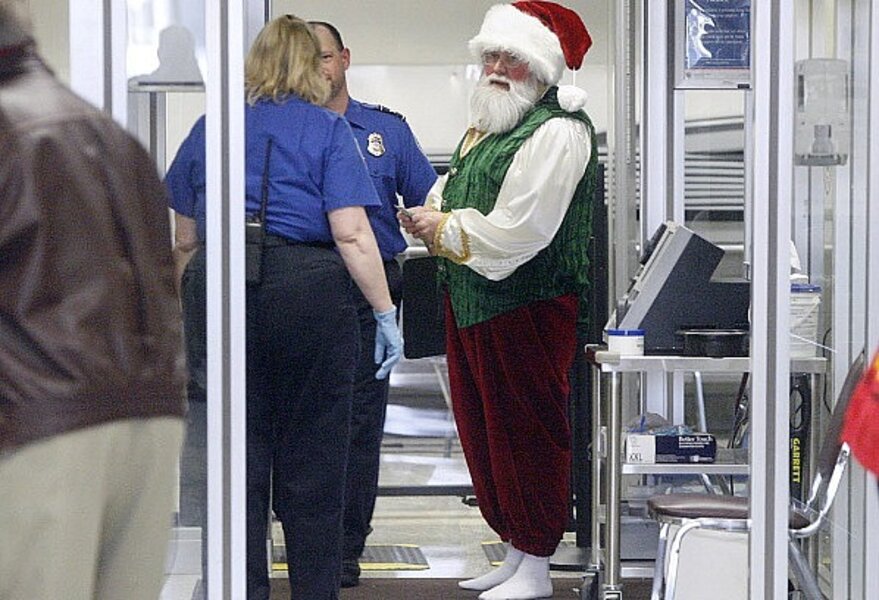Thermoses, coffee cups added to list of possible terrorist weapons
Loading...
Airline travelers this holiday season have one more thing to think about: whether to pack or carry a thermos bottle or beverage cup.
On one of the busiest travel days of the year, federal officials have alerted travelers to the likelihood of extra scrutiny regarding such items – which could be used to conceal explosive materials.
“Passengers traveling with insulated beverage containers can expect to see additional screening of these items using procedures currently in place, including X-ray screening, physical inspection and the use of explosives trace detection technology,” states an advisory issued Thursday night by the Transportation Security Administration (TSA).
Officials note no specific threat regarding thermos bottles and cups. But the warning to Christmas Eve travelers and others flying on airliners over the winter holidays – 43.6 million people, according to the Air Transport Association of America – comes as part of a broader official effort regarding airport and airline security.
The year has seen a number of specific threats and foiled terrorist attempts, beginning with the “underwear bomber” on a Northwest Airlines flight from Amsterdam to Detroit last Christmas.
Since then, there’s been an attempted car bombing in New York’s Times Square, the shipment of explosives hidden in printer toner cartridges on cargo planes bound for the US from Yemen, and several arrests of suspected domestic terrorists as the result of sting operations by the FBI and other law-enforcement agencies.
Most notably, that includes Mohamed Osman Mohamud, arrested recently for allegedly plotting to explode a bomb at the Pioneer Courthouse Square in Portland, Ore., where thousands of families had gathered for the traditional Christmas tree lighting. In October, a Pakistani-born US citizen was arrested on charges of plotting to carry out a coordinated bombing attack on Metrorail stations in suburban Virginia near Washington.
Controversial personal security measures
Travelers already have noted – and many have complained about – increased personal security measures at airports since last year’s Christmas Day airliner bomb attempt by a young Nigerian man, Umar Farouk Abdulmutallab.
In response to terrorist threats, the TSA now gives airline passengers two choices: Get a full-body scan using low-dose radiation that shows a naked image – everything from head to toe. Or refuse the scan and have a TSA official run his or her hands over every part of your body.
At a White House briefing Wednesday, chief counterterrorism adviser John Brennan outlined steps taken over the past year to increase security.
Among other things, according to Mr. Brennan, gaps in analysis and data collection have been closed, the criteria used to create terrorist watch lists and "no fly" lists have been revised, some 500 of the controversial “Advanced Imaging Technology” scanning machines for passengers have been deployed at more than 75 US airports, and additional steps have been taken to screen cargo shipped by air (or checked by passengers).
“We are in a much better position today than we were last year at this time,” he said.
Still, authorities are taking no chances when suggestions arise of new means of attack – including the possibility of hiding explosives as part of the insulation in thermoses and beverage cups.
Watch those carry-ons
The new TSA advisory notes that such items are allowed – for now, at least – based on an assessment of risk. The advisory applies to thermoses and cups whether or not they contain any liquids. It also reminds airline passengers that the “3-1-1 rules” for liquids remain in effect for carry-on bags. This states that liquids or gels must be in containers holding no more than 3 ounces; that such containers must be placed in a clear, one-quart zip-lock bag; and that travelers are limited to one such bag apiece.
This latest announcement comes as part of stepped-up efforts to prevent a terrorist attack in the United States during the holiday season.
“We are concerned these terrorists may seek to exploit the likely significant psychological impact of an attack targeting mass gatherings in large metropolitan areas during the 2010 holiday season, which has symbolic importance to many in the United States,” warns a recent bulletin sent to law-enforcement agencies by the Federal Bureau of Investigation and the Department of Homeland Security.
Of particular concern are public gatherings such as sporting events, parades, and religious or cultural activities.





